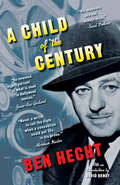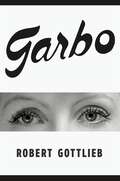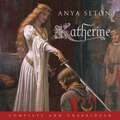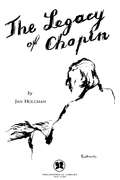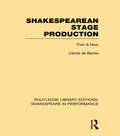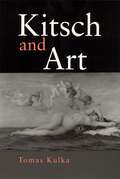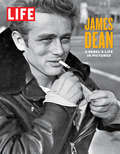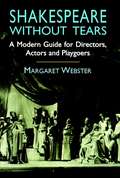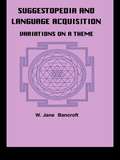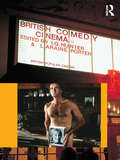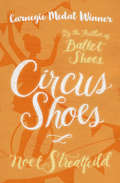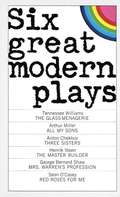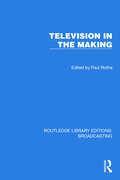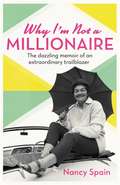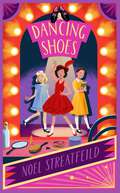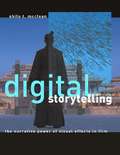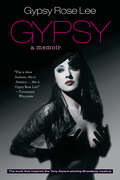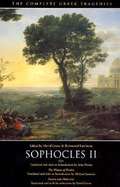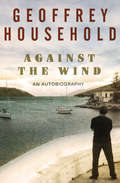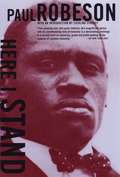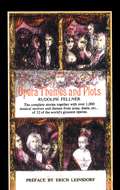- Table View
- List View
A Child of the Century
by Ben HechtBen Hecht’s critically acclaimed autobiographical memoir, first published in 1954, offers incomparably pungent evocations of Chicago in the 1910s and 1920s, Hollywood in the 1930s, and New York during the Second World War and after. “His manners are not always nice, but then nice manners do not always make interesting autobiographies, and this autobiography has the merit of being intensely interesting.”—Saul Bellow, New York Times Named to Time’s list of All-Time 100 Nonfiction Books, which deems it “the un-put-downable testament of the era’s great multimedia entertainer.”
Garbo
by Robert GottliebA New York Times Book Review Editors' Choice | One of Literary Hub's most anticipated books of 2021Award-winning master critic Robert Gottlieb takes a singular and multifaceted look at the life of silver screen legend Greta Garbo, and the culture that worshiped her.“Wherever you look in the period between 1925 and 1941,” Robert Gottlieb writes in Garbo, “Greta Garbo is in people’s minds, hearts, and dreams.” Strikingly glamorous and famously inscrutable, she managed, in sixteen short years, to infiltrate the world’s subconscious; the end of her film career, when she was thirty-six, only made her more irresistible. Garbo appeared in just twenty-four Hollywood movies, yet her impact on the world—and that indescribable, transcendent presence she possessed—was rivaled only by Marilyn Monroe’s. She was looked on as a unique phenomenon, a sphinx, a myth, the most beautiful woman in the world, but in reality she was a Swedish peasant girl, uneducated, naïve, and always on her guard. When she arrived in Hollywood, aged nineteen, she spoke barely a word of English and was completely unprepared for the ferocious publicity that quickly adhered to her as, almost overnight, she became the world’s most famous actress.In Garbo, the acclaimed critic and editor Robert Gottlieb offers a vivid and thorough retelling of her life, beginning in the slums of Stockholm and proceeding through her years of struggling to elude the attention of the world—her desperate, futile striving to be “left alone.” He takes us through the films themselves, from M-G-M’s early presentation of her as a “vamp”—her overwhelming beauty drawing men to their doom, a formula she loathed—to the artistic heights of Camille and Ninotchka (“Garbo Laughs!”), by way of Anna Christie (“Garbo Talks!”), Mata Hari, and Grand Hotel. He examines her passive withdrawal from the movies, and the endless attempts to draw her back. And he sketches the life she led as a very wealthy woman in New York—“a hermit about town”—and the life she led in Europe among the Rothschilds and men like Onassis and Churchill. Her relationships with her famous co-star John Gilbert, with Cecil Beaton, with Leopold Stokowski, with Erich Maria Remarque, with George Schlee—were they consummated? Was she bisexual? Was she sexual at all? The whole world wanted to know—and still wants to know.In addition to offering his rich account of her life, Gottlieb, in what he calls “A Garbo Reader,” brings together a remarkable assembly of glimpses of Garbo from other people’s memoirs and interviews, ranging from Ingmar Bergman and Tallulah Bankhead to Roland Barthes; from literature (she turns up everywhere—in Hemingway’s For Whom the Bell Tolls, in Evelyn Waugh, Graham Greene, and the letters of Marianne Moore and Alice B. Toklas); from countless songs and cartoons and articles of merchandise. Most extraordinary of all are the pictures—250 or so ravishing movie stills, formal portraits, and revealing snapshots—all reproduced here in superb duotone. She had no personal vanity, no interest in clothes and make-up, yet the story of Garbo is essentially the story of a face and the camera. Forty years after her career ended, she was still being tormented by unrelenting paparazzi wherever she went.Includes Black-and-White Photographs
Katherine: The classic historical romance
by Anya SetonKatherine comes to the court of Edward III at the age of fifteen. The naïve convent-educated orphan of a penniless knight is dazzled by the jousts and the entertainments of court. Nevertheless, Katherine is beautiful, and she turns the head of the King's favourite son John of Gaunt. But he is married, and she is soon to be betrothed.A few years later their paths cross again and this time their passion for each other cannot be denied or suppressed. Katherine becomes the prince's mistress, and discovers an extraordinary world of power, pleasure and passion.(P)2009 ISIS Publishing Ltd
Legacy of Chopin
by Jan HolcmanChopin's views on all phases of music: pianism, composing, teaching, piano transcriptions, criticism, musical progress, etc.
Men, Women and Pianos: A Social History
by Arthur LoesserA piano's-eye view of the social and philosophical history of Western Europe and the United States from the 17th century to the 1950s, with glances forward and back.
Men, Women & Pianos
by Arthur LoesserSome of the greatest composers of history have confined some of their most precious thoughts to the piano. For a century and a half, series of pianists of outstanding nimbleness and expressive power have attracted millions of admirers to their performances. Mozart, Beethoven and Chopin, Liszt, Rubinstein and Rachmaninov, to achieve the fulfillment of their art, needed to have pianos. From where did they get them? From factories, of course. But piano factories cannot stay in business simply by making a few instruments for a few great musicians. They must sell their products annually by the hundreds, by the thousands, to all manner of persons: doctors, lawyers, merchants, government officials. What did those persons want with pianos? This book may supply some answers to this question." That is the modest raison d'être for his book given by the author in a letter to the publisher. But any reader will see at once that the proliferations in the answer to his question result in something much more important and delightful. What Mr. Loesser has written is really a piano's-eye view of the social--and sometimes the philosophical--history of Western Europe and the United States from the seventeenth century to the present, with glances both forward and back. With a keen eye for both the ridiculous and the significant detail (which turn out often to be the same thing), he traces the history of the design and manufacture of the piano, and the music written for it, from its predecessors, the clavichord and the virginal, to the latest concert grand and the modern "spinet." Long established as an internationally known concert pianist, Mr. Loesser here shows himself to be an elegant stylist and an impressively learned scholar, who has the wit to see that in a social history the role of the interior decorator may be quite as important as that of the virtuoso--and that of the ambitious parent, more important than either.
Shakespearean Stage Production: Then and Now (Routledge Library Editions: Shakespeare in Performance #3)
by Cécile De BankeAn absorbing and original addition to Shakespeareana, this handbook of production is for all lovers of Shakespeare whether producer, player, scholar or spectator. In four sections, Staging, Actors and Acting, Costume, Music and Dance, it traces Shakespearean production from Elizabethan times to the 1950s when the book was originally published. This book suggests that Shakespeare should be performed today on the type of stage for which his plays were written. It analyses the development of the Elizabethan stage, from crude inn-yard performances to the building and use of the famous Globe. Since the Globe saw the enactment of some of the Bard’s greatest dramas, its construction, properties, stage devices, and sound effects are reviewed in detail with suggestions on how a producer can create the same effects on a modern or reconstructed Elizabethan stage. Shakespeare’s plays were written to fit particular groups of actors. The book gives descriptions of the men who formed the acting companies of Elizabethan London and of the actors of Shakespeare’s own company, giving insights into the training and acting that Shakespeare advocated. With full descriptions and pages of reproductions, the costume section shows the types of dress necessary for each play, along with accessories and trimmings. A table of Elizabethan fabrics and colours is included. The final section explores the little-known and interesting story of the integral part of music and dance in Shakespeare’s works. Scene by scene the section discusses appropriate music or song for each play and supplies substitute ideas for Elizabethan instruments. Various dances are described – among them the pavan, gailliard, canary and courante. This book is an invaluable wealth of research, with extensive bibliographies and extra information.
A Short History of Music (Fourth American Edition, Revised)
by Alfred EinsteinThis book covers considers such topics as: primitive music--what was it? how do we know anything about it? music of the middle ages, music of the renaissance, instrumental music through the ages, opera--Latin America is included in this discussion, chamber music--did you know it was popular in the 1920s? Though sometimes technical, this volume is easy to read.
Kitsch and Art
by Thomas KulkaWhat is kitsch? What is behind its appeal? More important, what is wrong with kitsch? Though central to our modern and postmodern culture, kitsch has not been seriously and comprehensively analyzed; its aesthetic worthlessness has been generally assumed but seldom explained. Kitsch and Art seeks to give this phenomenon its due by exploring the basis of artistic evaluation and aesthetic value judgments. Tomas Kulka examines kitsch in the visual arts, literature, music, and architecture. To distinguish kitsch from art, Kulka proposes that kitsch depicts instantly identifiable, emotionally charged objects or themes, but that it does not substantially enrich our associations relating to the depicted objects or themes. He then addresses the deceptive nature of kitsch by examining the makeup of its artistic and aesthetic worthlessness. Ultimately Kulka argues that the mass appeal of kitsch cannot be regarded as aesthetic appeal, but that its analysis can illuminate the nature of art appreciation.
LIFE James Dean: A Rebel's Life in Pictures
by The Editors of LifeLIFE Magazine memorializes actor James Dean.
Shakespeare Without Tears
by Margaret WebsterA prominent producer-director of Shakespeare's plays writes with wit and verve about the Elizabethan theater and subsequent modifications in theatrical practice, differences between actors and audiences in Shakespeare's day and ours, and more "There is not an obscure or otherwise dull page in the book." -- N.Y. Times Book Review.
Suggestopedia and Language
by W. Jane BancroftFirst published in 1999. Routledge is an imprint of Taylor & Francis, an informa company.
British Comedy Cinema (British Popular Cinema)
by Laraine Porter I. Q. HunterBritish comedy cinema has been a mainstay of domestic production since the beginning of the last Century and arguably the most popular and important genre in British film history. This edited volume will offer the first comprehensive account of the rich and popular history of British comedy cinema from silent slapstick and satire to contemporary romantic comedy. Using a loosely chronological approach, essays cover successive decades of the 20th and 21st Century with a combination of case studies on key personalities, production cycles and studio output along with fresh approaches to issues of class and gender representation. It will present new research on familiar comedy cycles such as the Ealing Comedies and Carry On films as well as the largely undocumented silent period along with the rise of television spin offs from the 1970s and the development of animated comedy from 1915 to the present. Films covered include: St Trinians, A Fish Called Wanda, Brassed Off, Local Hero, The Full Monty, Four Lions and In the Loop. Contributors: Melanie Bell, Alan Burton, James Chapman, Richard Dacre, Ian Hunter, James Leggott, Sharon Lockyer, Andy Medhurst, Lawrence Napper, Tim O’Sullivan, Laraine Porter, Justin Smith, Sarah Street, Peter Waymark, Paul Wells
Circus Shoes (Shoes #2)
by Noel StreatfeildWinner of the Carnegie Medal: Threatened with being sent to separate orphanages, a brother and sister run away and join the circus When the aunt who raised them dies, 12-year-old Peter and his 11-year-old sister, Santa, face their greatest fear: being sent to separate orphanages. Vowing to stay together, they track down their only remaining relative. Uncle Gus, the black sheep of the family, has been with Cob's Circus since the war. Peter and Santa arrive just in time to see the caravans pull up. Almost before their eyes, the tents appear and an extraordinary world comes to life. They meet Alexsis Petoff and his family of acrobats; the Schmidt twins and their amazing sea lions; Lorenzo, the ornery waltzing-horse; and a trick poodle named Mis. Soon, Santa is practicing tumbling and Peter is learning to ride. They feel like they are part of the circus community. But life under the big top is hard work, and Santa and Peter will have to rise to the challenge or leave the one place they can finally call home.
Composers on Music: An Anthology of Composers' Writings from Palestrina to Copland
by Sam Morgenstern88 composers talk about music, ranging from the 1500s to the 1900s.
Six Great Modern Plays
by Anton ChekhovA collection of modern--yet timeless--plays: "The Glass Menagerie," by Tennessee Williams; "All My Sons," by Arthur Miller; "Three Sisters," by Anton Chekhov; "The Master Builder," by Henrik Ibsen; "Mrs. Warren's Profession," by George Bernard Shaw; and "Red Roses for Me," by Sean O'Casey.
Television in the Making (Routledge Library Editions: Broadcasting #37)
by Paul RothaTelevision in the Making (1956) looks at television in its infancy, with essays by the leaders of the medium at the time, people who were forging new paths as they imagined and actioned the possibilities of television.
Why I'm Not A Millionaire: The dazzling memoir of an extraordinary trailblazer
by Nancy SpainThe superb classic memoir from a dazzlingly eccentric and endlessly fascinating author - a woman very much ahead of her time.'She was bold, she was brave, she was funny, she was feisty. I owe her a great deal in leading the way' Sandi ToksvigNancy Spain was one of the most celebrated - and notorious - writers and broadcasters of the 40s, 50s and 60s. Hilarious, controversial and brilliant, she lived openly as a lesbian (sharing a household with her two lovers and their various children) and was frequently litigated against for her newspaper columns - Evelyn Waugh successfully sued her for libel... twice. She was also a fantastic crime novelist (and according to the Guardian, one of the 50 best female crime thriller writers of all time) writing with a unique style that marries the acid wit of Dorothy Parker with the intricacy of plotting worthy of Agatha Christie. WHY I AM NOT A MILLIONAIRE, has the same wit, style and fascinating detail - first published in 1956, with an introductory note from Noel Coward. After her death in a plane crash in 1964, Noel Coward commented: 'It is cruel that all that gaiety, intelligence and vitality should be snuffed out, when so many bores and horrors are left living.'
Dancing Shoes
by Noel StreatfeildHigh kicks and low blows are all around in this entertaining story about life at stage school - by the author of Ballet Shoes, this is perfect for young fans of shows like The Next Step, Cheer and The Greatest Dancer.It's 1957 and Rachel and Hilary are sent to live with their ambitious aunt who runs a stage school, training a troupe of dancing girls. It's heaven for Hilary who loves to perform, but quite the opposite for quiet Rachel. The last thing Rachel wants is to become one of her aunt's Little Wonders - particularly if it means behaving like their irritating show-off of a cousin . . . A mischievous, fun and moving story about young performers, from the acclaimed author of the classic Ballet Shoes.
Digital Storytelling
by Shilo T. MccleanComputer-generated effects are often blamed for bad Hollywood movies. Yet when a critic complains that "technology swamps storytelling" (in a review of Van Helsing, calling it "an example of everything that is wrong with Hollywood computer-generated effects movies"), it says more about the weakness of the story than the strength of the technology. In Digital Storytelling, Shilo McClean shows how digital visual effects can be a tool of storytelling in film, adding narrative power as do sound, color, and "experimental" camera angles--other innovative film technologies that were once criticized for being distractions from the story. It is time, she says, to rethink the function of digital visual effects. Effects artists say--contrary to the critics--that effects always derive from story. Digital effects are a part of production, not post-production; they are becoming part of the story development process. Digital Storytelling is grounded in filmmaking, the scriptwriting process in particular. McClean considers crucial questions about digital visual effects-- whether they undermine classical storytelling structure, if they always call attention to themselves, whether their use is limited to certain genres--and looks at contemporary films (including a chapter-long analysis of Steven Spielberg's use of computer-generated effects) and contemporary film theory to find the answers. McClean argues that to consider digital visual effects as simply contributing the "wow" factor underestimates them. They are, she writes, the legitimate inheritors of film storycraft.
Gypsy: A Memoir
by Gypsy Rose LeeGypsy Rose Lee&’s memoir became a New York Times bestseller in 1957, inspiring the 1959 hit musical, two movies, and three revivals. Now a fourth, directed by Arthur Laurents and starring Patti LuPone, is lighting up New York, winning top Broadway theatre awards, including three 2008 Tony Awards, as well as raves from critics and audiences: &“No matter how long you live, you&’ll never see a more exciting production.&” —Terry Teachout, The Wall Street Journal &“Watch out, New York! This GYPSY is a wallop-packing show of raw power.&” —Ben Brantley, The New York Times &“Not your ordinary theater experience. This is the best production of the best damn musical ever.&” —Liz Smith, Syndicated Columnist The memoir, which Gypsy began as a series of pieces for The New Yorker, contains photographs and newspaper clippings from her personal scrapbooks and an afterword by her son, Erik Lee Preminger. At turns touching and hilarious, Gypsy describes her childhood trouping across 1920s America through her rise to stardom as The Queen of Burlesque in 1930s New York—where gin came in bathtubs, gangsters were celebrities, and Walter Winchell was king. Gypsy&’s story features outrageous characters—among them Broadway&’s funny girl, Fanny Brice, who schooled Gypsy in how to be a star; gangster Waxy Gordon, who fixed her teeth; and her indomitable mother, Rose, who lived by her own version of the Golden Rule: &“Do unto others … before they do you.&”
Sophocles II: Ajax, The Women of Trachis, Electra, Philoctetes (The Complete Greek Tragedies #9)
by Richmond Lattimore Sophocles David GreneIn nine paperback volumes, the Grene and Lattimore editions offer the most comprehensive selection of the Greek tragedies available in English. Over the years these authoritative, critically acclaimed editions have been the preferred choice of over three million readers for personal libraries and individual study as well as for classroom use.
Against the Wind: An Autobiography
by Geoffrey HouseholdIn this fascinating and uniquely colorful autobiography, a twentieth-century master of suspense fiction candidly examines his extraordinary life, times, and art One of the twentieth century's most respected writers of adventure and espionage thrillers, Geoffrey Household penned more than twenty novels and short story collections in a career that spanned more than fifty years--and lived a life as eventful and surprising as his acclaimed, pulse-pounding fiction. In Against the Wind, the author whom the New York Times credits with having "helped to develop the suspense story into an art form" shares his remarkable personal history with candor and wit, while exploring the creative process and his roles as a husband, father, bestselling popular artist, and citizen of his uniquely eventful time. From his years as a student at the University of Oxford to his early career in the cutthroat world of international business and finance to his patriotic service with British intelligence during World War II, with perilous postings in Greece, Romania, and the Middle East that later informed his thrilling fiction, Household evocatively recalls a peripatetic life lived purposefully and often dangerously in some of the most colorful and fascinating regions of the globe.
Here I Stand
by Paul RobesonRobeson's international achievements as a singer and actor in starring roles on stage and screen made him the most celebrated black American of his day, but his outspoken criticism of racism in the United States, his strong support of African independence, and his fascination with the Soviet Union placed him under the debilitating scrutiny of McCarthyism. Blacklisted, his famed voice silenced, Here I Stand offered a bold answer to his accusers. It remains today a defiant challenge to the prevailing fear and racism that continues to characterize American society.
